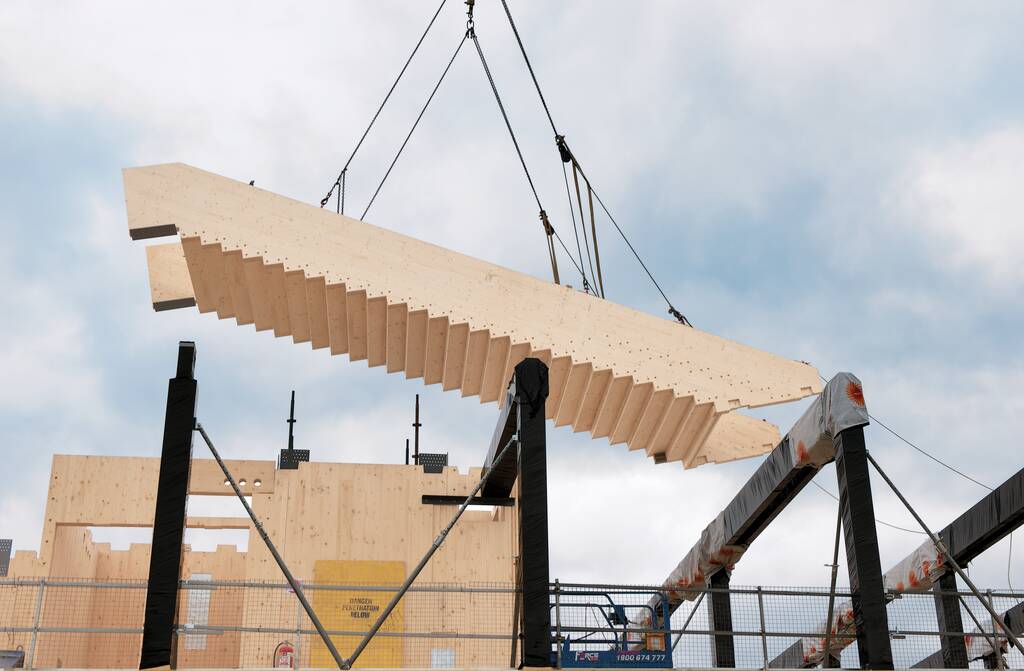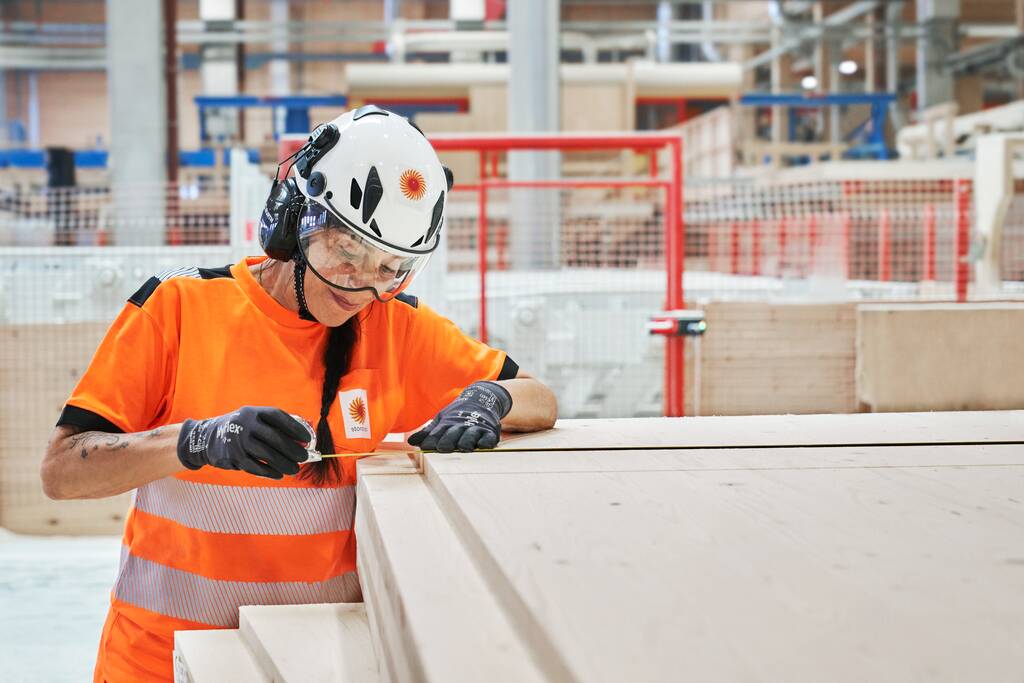Consider the transport implications of design and manufacturing choices
Transportation is essential for prefabricated components such as mass timber. Sizes of lorries and their corresponding loads are relatively standardised, and the use of standardised dimensions to inform maximum component sizes will help optimise transportation and decrease costs.
Understanding how different types of components can be stacked for delivery dependent on different factors or requirements is also useful. Generally speaking, there are four types of delivery load; panels and components stacked horizontally on top of each other, panels and components positioned vertically (toast rack), panels and components leant either side of an A-frame and volumetric modules, which are positioned on the flat bed of the lorry and typically cannot be stacked. Horizontally laid and stacked is often the most efficient, in terms of reducing the number of deliveries, but other factors should be considered and a combination may be needed.
The geometry of the components may impact which of these options is possible (height and width of a typical load are not the same), while the choice can also be driven by things like the type of component and level of prefabrication. For example, elements containing glazing, if fully installed and sealed, should typically be retained in their ‘final’ orientation to prevent any movements from compromising the seals. If delicate linings, or particularly rainscreen cladding systems, are pre-installed onto panels these may be unable to take the load of other panels being laid on top of them for transport necessitating vertical delivery.
Whilst oversized (long or wide) loads are sometimes possible they require specific types of vehicles, a confirmed route that can accommodate the relevant dimensions between the factory and site (may need to take a longer route to avoid low bridges etc.) and typically some sort of escort or special measures for the duration of the delivery, all of which adds cost. For this reason, it is preferable to understand transportation constraints on a given project during the design stage, and to work within maximum easily transportable component sizes where possible.
Another key aspect of transportation for prefabricated timber components is protection from weather, both moisture and UV. Adequate protective coverings should be applied within the factory and remain on the prefabricated components until they are installed.
Why storage is vital for prefabricated components
Storage requires consideration on any project but particularly so when prefabricated components are being used extensively, as they are typically large and can be challenging to manoeuvre, whilst also often having a greater level of finishing meaning the potential for damage is increased.
For prefabricated components storage at or inside the factory may also need to be considered / discussed with the manufacturer as, if limited, this may necessitate more storage on site in order to keep up with the desired construction programme.
If components can be stored within the factory, until such time that they are needed on site (and manufactured as ‘last minute’ as possible), then it may be possible to arrange ‘just in time’ delivery which mitigates the need for extensive and prolonged site storage, as components can be directly installed from the delivery vehicle. This is common on mass timber projects, especially as installation is also quick and so the impact of delivery vehicles remaining in place while installation takes place is typically more practical.
Alternatively, any components which are delivered and will not be immediately installed should have a designated storage area where they will not be damaged. With timber components in particular, care must be given to ensure all stored panels are adequately raised off the ground and that protective wraps used for delivery are kept in place and remain undamaged.
Timber components can not only be affected by exposure to moisture but will also be impacted by UV exposure which should be considered if they are remain in external storage for any significant period. Protective wraps which block out UV light (opaque rather than transparent) can be used in such circumstances, and again it is essential that this wrap is not opened or compromised prematurely.
If wrapped individually it may be beneficial for panels or components to be installed with the wraps retained, as this provides additional protection on each relevant storey as the building is erected. Conversely if panels or components are wrapped collectively it is essential that temporary covers are positioned over any uninstalled components to protect from moisture and UV until they are all installed. Irregularly stacked panels are often left open to the elements on building sites where they develop uneven UV staining, moisture damage and dirt accumulation, this should be avoided at all costs, an adequate process for protecting stored materials should be included in the construction management plan and adhered to.



